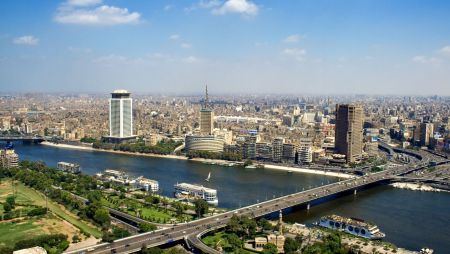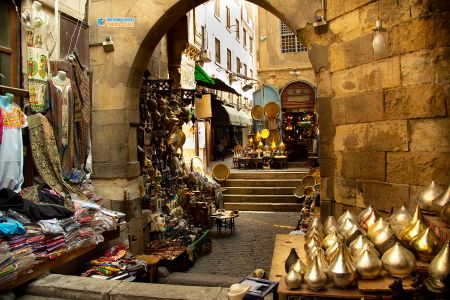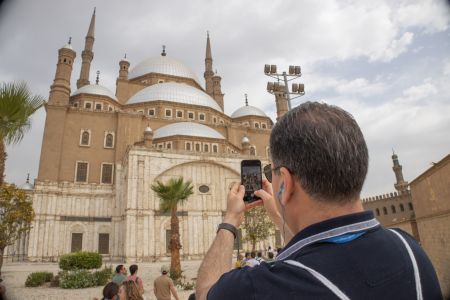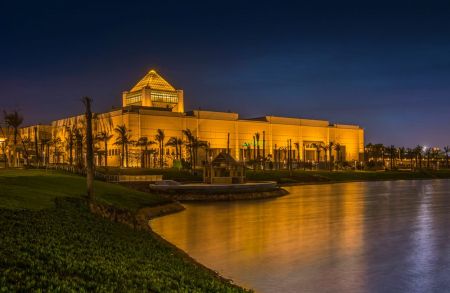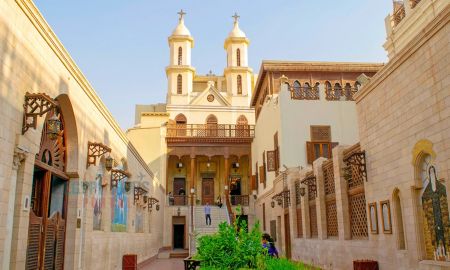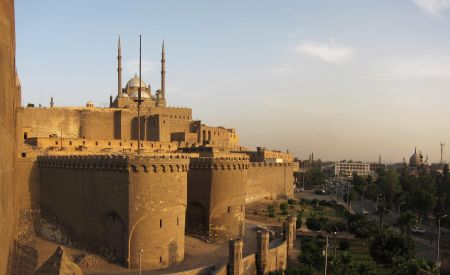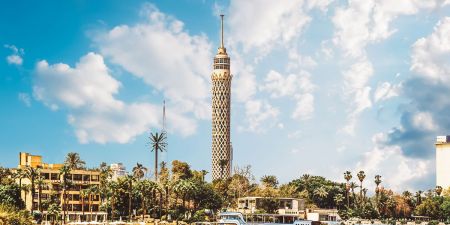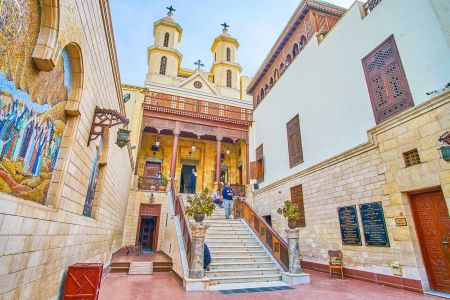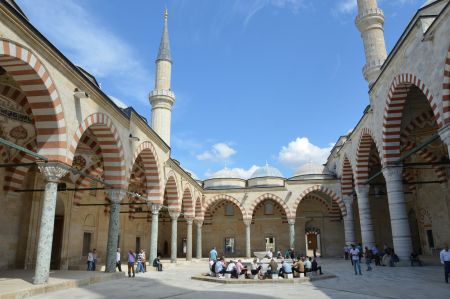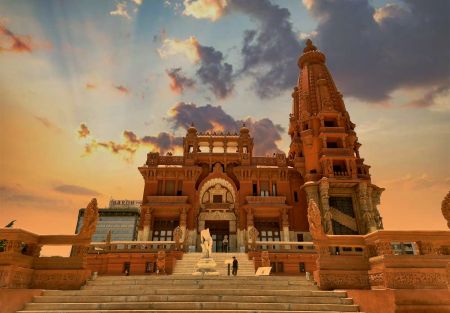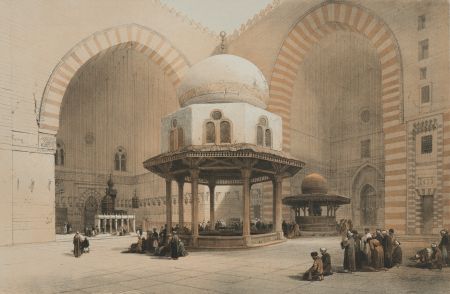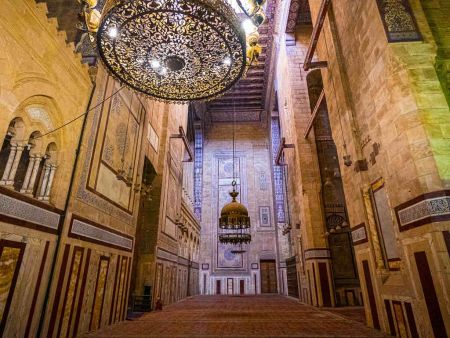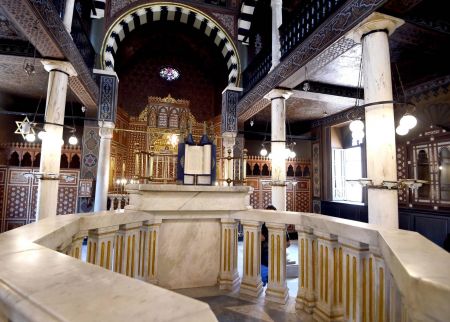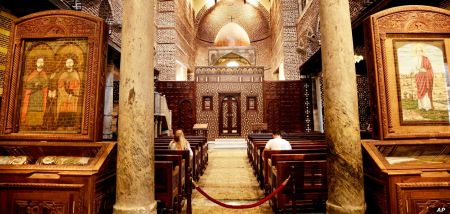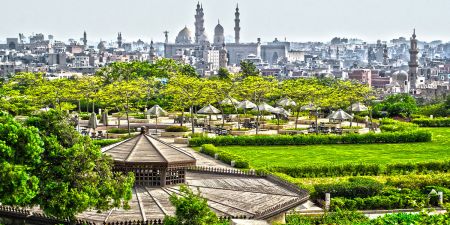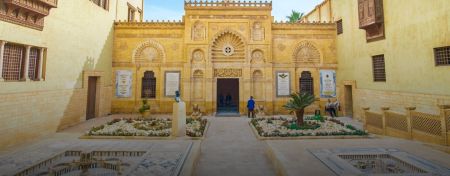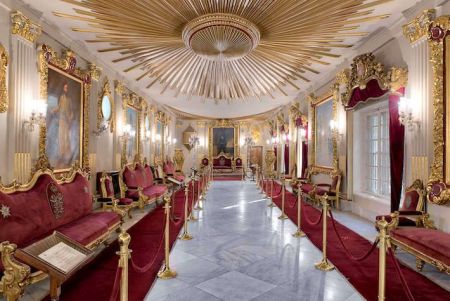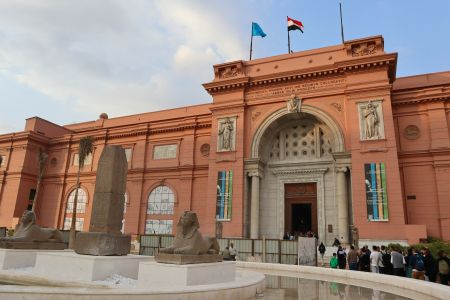Mosque of Ibn Tulun : Cairo’s Timeless Abbasid Masterpiece
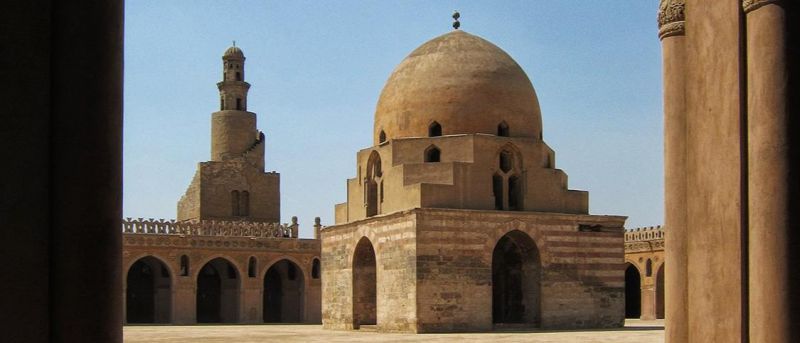
Tucked away in the heart of Old Cairo, the Mosque of Ibn Tulun is a stunning relic of early Islamic architecture and Egypt’s oldest mosque still in its original form. Built between 876 and 879 AD by Ahmad Ibn Tulun, the Abbasid governor of Egypt, this mosque is a testament to the artistic and political influence of the Islamic Golden Age. Unlike the later, more ornate Mamluk and Ottoman structures, the Mosque of Ibn Tulun boasts a pure, stripped-down grandeur—massive in scale, yet minimal in decoration.
What sets this mosque apart is its authenticity. It hasn’t been rebuilt or replaced. Instead, it has quietly endured through the centuries, offering a powerful, meditative space for worship and reflection. With its vast courtyard, iconic spiral minaret, and thick, fortress-like walls, the mosque feels more like a sacred fortress than a decorative shrine. Its design draws inspiration from the Great Mosque of Samarra in Iraq, echoing the architectural heritage of the Abbasid dynasty.
Visiting the Mosque of Ibn Tulun is like stepping into a different era—a quiet, sacred place removed from the noise and modernity of today’s Cairo. It remains a rare example of early Islamic architecture that still breathes with life and history.
History of the Mosque of Ibn Tulun
Who Was Ahmad Ibn Tulun?
Ahmad Ibn Tulun was a Turkish military leader appointed by the Abbasid caliph to govern Egypt. He eventually broke away from direct Abbasid control and founded the autonomous Tulunid dynasty. Eager to establish Cairo as a powerful Islamic center, he commissioned the construction of this mosque to reflect the authority and independence of his rule.
Built as Part of a Royal Capital
The mosque was part of a larger royal city called Al-Qata’i, which served as the capital of the Tulunid dynasty. Though the city was later destroyed, the mosque miraculously survived, preserving the memory of an ambitious ruler and a golden age of Islamic rule in Egypt.
Architectural Significance of the Mosque
Inspired by Abbasid Design
The mosque follows the traditional hypostyle layout common in early Islamic architecture. It includes a large open courtyard surrounded by arcades and covered prayer halls supported by massive brick piers. The design was influenced by the Abbasid capital of Samarra, particularly its large spaces and minimal ornamentation.
Unique Spiral Minaret
The most iconic feature of the mosque is its spiral minaret—a rarity in Egypt. Modeled after the Malwiya minaret of Samarra’s Great Mosque, it features an external staircase that winds upward like a snail shell. Visitors can still climb to the top for a panoramic view of Old Cairo.
Construction Materials and Dimensions
Built primarily from red brick covered with plaster, the mosque stretches 140 meters by 120 meters, making it one of the largest in Cairo. Its walls are fortress-like, designed to resist both time and invaders. The mosque’s pointed arches and stucco details are among the earliest examples of Islamic decoration in Egypt.
Religious and Cultural Impact
A Place of Worship for Over 1,100 Years
Since its completion in the 9th century, the Mosque of Ibn Tulun has continuously served as a place of worship. Its simplicity and vast scale provide a tranquil atmosphere perfect for prayer and reflection. The mosque still hosts religious events, particularly during Ramadan and Friday prayers.
A Legacy of Early Islamic Architecture
Architecturally, the mosque marks a significant shift from the Roman and Byzantine styles that previously dominated the region. It paved the way for future Islamic construction in Egypt, influencing generations of mosque builders from the Fatimids to the Mamluks.
Preservation and Restoration
Minimal Modifications Through the Centuries
Unlike many ancient mosques that have been repeatedly restored or rebuilt, Ibn Tulun’s structure has remained largely untouched. Minor additions were made during the Mamluk period, including some wooden decorations and a new minbar, but the overall layout remains true to its original 9th-century design.
Modern Conservation Efforts
The mosque is now protected by the Egyptian Ministry of Antiquities. Restoration projects have focused on stabilizing its ancient brickwork, preserving calligraphy and stucco motifs, and maintaining its public accessibility. It remains one of Cairo’s most beautifully preserved historic sites.
Make the most of your time in Egypt — discover pyramids, temples, and vibrant bazaars with Egypt Day Tours.
Visiting the Mosque of Ibn Tulun – A Hidden Gem in Cairo
Location and Accessibility
The mosque is located in the Sayeda Zeinab district, near the Gayer-Anderson Museum and not far from the Citadel. It’s easily reachable by taxi or as part of a walking tour of Islamic Cairo.
Entry, Hours, and Dress Code
Entry is typically free or involves a modest fee for foreign visitors. Open daily from morning until late afternoon, the mosque welcomes visitors of all faiths. Modest dress is required—long sleeves and covered legs for both men and women. Shoes must be removed before entering prayer areas.
Best Time to Visit
The mosque is often quiet, making it perfect for contemplative visits or photography. Early mornings and weekdays offer a peaceful, crowd-free experience. Sunlight streaming through the arches casts mesmerizing shadows across the stone floor.
Nearby Attractions Around the Mosque of Ibn Tulun
Visiting the Mosque of Ibn Tulun is often the perfect starting point for exploring some of Cairo’s most fascinating nearby landmarks. Just a short walk away lies the enchanting Coptic Cairo district, home to The Hanging Church and The Coptic Museum, where ancient manuscripts and icons bring Egypt’s Christian heritage to life. Not far from the mosque is the vibrant Khan al-Khalili Bazaar, a bustling marketplace where travelers can shop for spices, jewelry, and handcrafted souvenirs while soaking up the energy of historic Cairo. For those drawn to Islamic architecture, the monumental Sultan Hassan Mosque and the regal Al Rifai Mosque are close by, both offering breathtaking interiors and centuries of history. A little further uphill, the iconic Salah El Din Citadel crowns the city with panoramic views and houses the magnificent Mosque of Muhammad Ali (The Alabaster Mosque of Cairo). Together, these attractions create a rich cultural circuit, making a visit to Mosque of Ibn Tulun not just a single stop, but the gateway to an unforgettable Cairo adventure.
Why the Mosque of Ibn Tulun Deserves More Recognition
The Mosque of Ibn Tulun may lack the flashy ornamentation of later mosques, but its spiritual depth and architectural purity set it apart. It is a rare example of unaltered Islamic design from the Abbasid period—a masterpiece of space, proportion, and serenity.
Whether you’re a history lover, an architecture enthusiast, or a spiritual traveler, this mosque offers something few other places can: the chance to touch the past in its original form. As Cairo modernizes and expands, the Mosque of Ibn Tulun stands still—silent, strong, and sacred.
Frequently Asked Questions About the Mosque of Ibn Tulun
Who built the Mosque of Ibn Tulun?
The mosque was built by Ahmad Ibn Tulun, the founder of Egypt’s Tulunid dynasty, between 876 and 879 AD.
What makes the Mosque of Ibn Tulun unique?
It is Egypt’s oldest surviving mosque in its original form, known for its Abbasid architecture, vast open courtyard, and rare spiral minaret.
Can visitors climb the minaret?
Yes, visitors can climb the spiral staircase to the top of the minaret for sweeping views of Old Cairo.
Is there a dress code for visiting?
Yes, modest dress is required. Both men and women should cover their legs and arms. Shoes must be removed when entering prayer areas.
What is the best time to visit the mosque?
Morning or late afternoon visits offer the best lighting and quieter atmosphere. Weekdays are generally less crowded.


